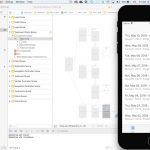Wet code makes your app a breeding ground for software bugs
Whenever we add new features to an app, code redundancy is inevitable and software bugs may happen. That is why we invest time in organizing and cleaning up the code. Code redundancy happens when a developer repeats the same snip of code in multiple places. Larger blocks of code can be shortened in order to become more readable and more efficient. Code can be better organized in functions and classes that do one specific task or group of tasks. If we continue adding and removing features to an app without any house cleaning, the app is prone to become buggy and unreliable. Bugs happen as a result of developers’ mistakes. Mistakes pile up; developers who navigate their way through a jungle of messy code, are more likely to make mistakes.
Can we prevent code redundancy and software bugs?
To err is human. It’s impossible to develop software that is 100% bug-free. The best we can achieve is to minimize the bugs by methods such as Test Driven Development (TDD), extensive quality testing, and code refactoring to make the code DRYer.
What’s a DRY code?
DRY stands for Don’t Repeat Yourself. For example, if you have 5 lines of code that create a PDF file from a pie chart, those 5 lines of code better not be repeated in multiple places whenever we want to create a PDF file. The application has to reuse the same 5 lines of code. This is a specific case scenario when the principle of not repeating ourselves applies, however, we normally say that we are making the code DRY whenever we are cleaning up, refactoring, and organizing the codebase in an application.
Likewise, a messy codebase is called a wet code. A wet codebase is more prone to bugs and becomes unreliable.
Include code clean-up in every release cycle
It is important that you allocate resources for code cleanup whenever you add new features to an app within a release cycle. Unfortunately, project owners who aren’t coming from a technical background tend to ignore this issue in order to keep the costs down. From their perspective, there is a one-to-one relationship between funds invested and features added to an app. Benefits of making the codebase dry aren’t immediately evident. Project owners may think that this is an excuse for their software team to ask for more resources. As a result software team continues adding features as code redundancy accumulates in the app. The code becomes wet!
There is a good term for that: it’s called technical debt! At some point, the debt catches up with your investment. We get requests every month from project owners whose developers had simply given up and left. One quick review of their codebase shows that they are in debt.
If your development team or software agency hasn’t included code cleanup in their scope, ASK FOR IT. Even better, ask why they haven’t included code maintenance in their estimate. Ask what strategies they use to make sure your codebase stays DRY and doesn’t become a breeding ground for software bugs.





